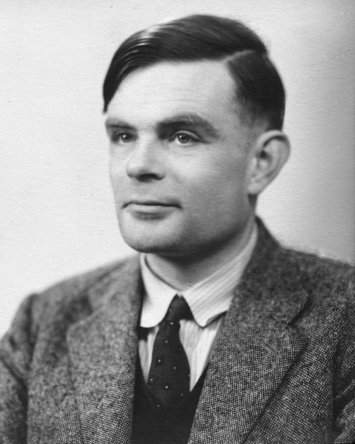British mathematician Alan Turing’s accomplishments in computer science are well known—he’s the man who cracked the German Enigma code, expediting the Allies’ victory in World War II.
He also had a tremendous impact on biology and chemistry. In his only paper in biology, Turing proposed a theory of morphogenesis, or how identical copies of a single cell differentiate, for example, into an organism with arms and legs, a head and tail.

Now, 60 years after Turing’s death, researchers from the University of Pittsburgh and Brandeis University have provided the first experimental evidence that validates Turing’s theory in cell-like structures.
The team published their findings in the Proceedings of the National Academy of Sciences on March 10.
Turing, in 1952, was the first to offer an explanation of morphogenesis through chemistry. He theorized that identical biological cells differentiate and change shape through a process called intercellular reaction-diffusion. In this model, chemicals react with each other and diffuse across space—say between cells in an embryo. These chemical reactions are managed by the interaction of inhibitory and excitatory agents. When this interaction plays out across an embryo, it creates patterns of chemically different cells. Turing predicted six different patterns could arise from this model.
At Brandeis, Seth Fraden, professor of physics, and Irv Epstein, professor of chemistry, created rings of synthetic, cell-like structures with activating and inhibiting chemical reactions to test Turing’s model. Pitt’s G. Bard Ermentrout, University Professor of Computational Biology and professor of mathematics in the Kenneth P. Dietrich School of Arts and Sciences, undertook mathematical analysis of the experiments.
The researchers observed all six patterns plus a seventh unpredicted by Turing.
In addition, they noticed that, as Turing theorized in the 1950s, the once identical cell-like structures—now chemically different—also began to change in size due to osmosis. This may explain how some cells, further down the development assembly line, become large egg cells or tiny sperm cells.
The research “tells you how a zebra gets its stripes,” says Ermentrout. Turing’s theory underlies pattern formation in every biological area from pigmentation of seashells to the shapes of flowers and leaves and to the geometric structures seen in drug-induced hallucinations, he adds. Thus, validating Turing’s theory could have an impact on future research in fields ranging from embryology to neurology to cardiology. This research could impact not only the study of biological development but the study of materials science as well. For example, Turing’s model could help grow soft robots with certain patterns and shapes.
The research was funded in part by grants from the National Science Foundation Material Research Science and Engineering Center (DM-0820492 and CHE-1012428). Nathan Tompkins, Ning Li, Camille Girabawe, and Michael Heymann, all from Brandeis University, also contributed to the paper, titled “Testing Turing’s theory of morphogenesis in chemical cells.”






